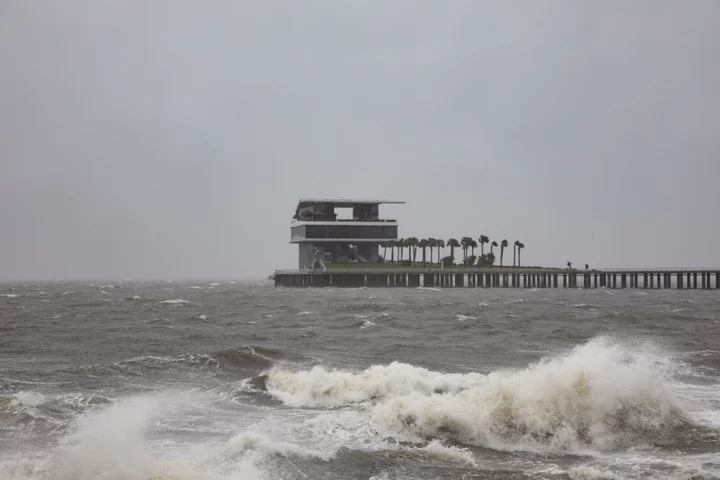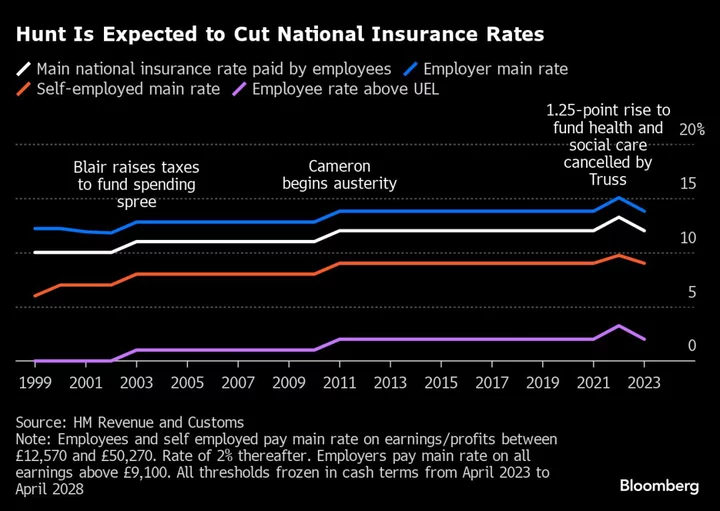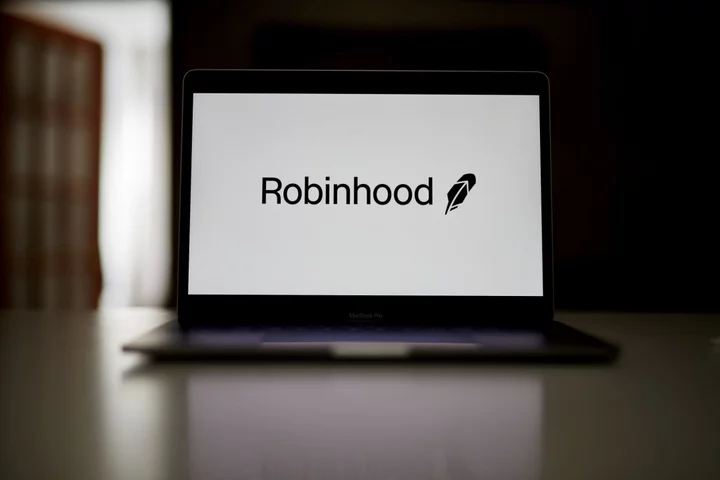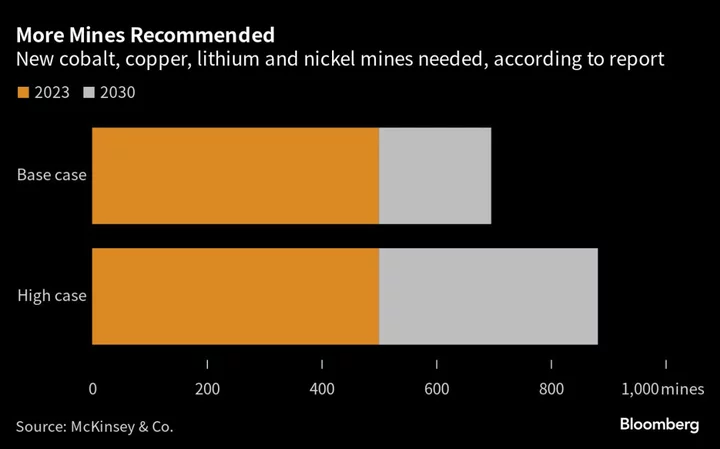Florida is bracing for a major hurricane that is poised to bring life-threatening winds and storm surge to the Tampa Bay area as Tropical Storm Idalia neared hurricane strength Monday in the Gulf of Mexico.
Idalia’s sustained winds were measured at 70 miles (113 kilometers) per hour, just below hurricane force, the US National Hurricane Center said in an advisory at 8 p.m. New York time. The storm is forecast to reach Category 3 strength at 120 mph as it makes landfall Wednesday after hitting western Cuba.
Depending on its exact track, Idalia could cause as much as $10 billion in damage and losses, according to a disaster modeling firm Enki Research.
“Idalia will likely become a hurricane later tonight as it moves into the southeastern Gulf of Mexico where conditions appear very favorable for additional intensification,” National Hurricane Center Deputy Director Jamie Rhome said Monday in a video posted on YouTube. “It is now forecast to become a major hurricane as it approaches the Florida big bend.”
Idalia’s winds could jump by 35 mph or more in a day, a burst of strength that sometimes takes officials and residents by surprise as a storm approaches.
Florida Governor Ron DeSantis extended his emergency declaration to cover 46 counties, up from 33 earlier this weekend. And President Joe Biden approved federal emergency declarations for Florida, allowing the Department of Homeland Security and the Federal Emergency Management Agency to coordinate relief efforts. Tampa International Airport will close Tuesday.
Because the storm’s track can change before it makes landfall, DeSantis warned residents all along the coast, from Tampa to the Florida Panhandle, to be prepared. Mandatory evacuation orders have been issued for parts of Hillsborough, Citrus, Pinellas, Levy, Manatee, Pasco, Taylor and Suwannee counties.
“This is going to be a major hurricane, you could have catastrophic storm surge in your area,” DeSantis said. “You could have major impact even if you’re outside the cone, so please plan accordingly.”
In addition to its winds, Idalia could push as much as 12 feet (3.7 meters) of water onto the shore from the Aucilla River to Chassahowitzka, Florida, and as much as 7 feet into Tampa Bay, as well as drench a large area as far north as the Carolinas with up to 8 inches of rain. Flooding downpours that could spark landslides also are expected across western Cuba as the storm moves north.
Officials in Cuba declared a hurricane warning for three western provinces, as large swathes of the island were drenched in rain. In Pinar del Rio, the heart of Cuba’s tobacco industry, municipal authorities said they had moved and protected more than 580 tons of tobacco leaves amid “intense rainfall.”
How much damage Idalia does will depend on its exact track, said Phil Klotzbach, a hurricane researcher at Colorado State University. It is forecast to approach the coast at a shallow angle and if it comes in just north of Tampa, it could push a lot of storm surge up the bay, causing quite a bit of damage. The worst surge and winds along the coast will likely be from where the eye hits to areas south of there.
“It is going to be a really close call, 20 or 30 miles is going to make a lot of difference,” Klotzbach said. “It’s yet another nail-biter for Tampa.”
Barge traffic moving fuel along the US Gulf Coast to Florida is down, according to Ned Bowman, executive director of the Florida Fuel Marketers Association. Meanwhile, demand is surging for gasoline as Floridians fill up for possible evacuations as well as for diesel for backup power generation, Bowman said.
To complicate matters, DeSantis said the state has identified 29 gas stations that recently received tainted fuel. Citgo said Sunday it discovered contaminated fuel at its terminal in Tampa, Florida, and has asked marketers to stop sales of the product. DeSantis said the incident likely won’t have a major impact on fuel supply.
Florida is mainly supplied via waterborne shipments from refiners in Texas and Louisiana. The Coast Guard has closed the ports of Tampa, Manatee, St. Petersburg and Fort Myers to incoming traffic in advance of Idalia.
If it reaches forecast strength, Idalia would be the first major hurricane to hit Florida since last September when Hurricane Ian struck the western part of the state as a Category 4 storm, killing at least 150 people and causing more than $112 billion in damage, the hurricane center said.
Idalia is expected to stay in the eastern Gulf, away from offshore oil and natural gas production. Most of the key citrus areas in central Florida would not be seriously impacted, World Weather Inc. President Drew Lerner said.
However, Idalia may affect agriculture across the South, as well as bring widespread power outages and snarl land and air travel. Utilities said they were moving their crews to respond to potential blackouts caused by the storm.
--With assistance from Immanual John Milton, Jim Wyss, Sheela Tobben, Chunzi Xu, Anna Jean Kaiser and Dan Murtaugh.
(Updates with new advisory in second paragraph and Cuba details in 10th paragraph.)
Author: Brian K. Sullivan and Mark Chediak









